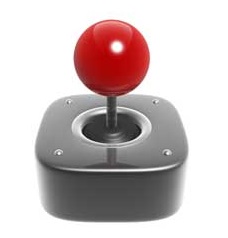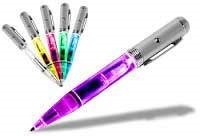A display device or VDU (Video Display Unit) is an output device for presentation of information in visual. When the input information is supplied has an electrical signal, the display is called an electronic display.
Common applications for electronic visual displays are televisions or computer monitors.
All of the PCs that we use need to have some displays. Normally there are the standard monitors, but they now are available in various varieties like LCD, LED. The evolution of the displays has not just only made the space that they contain become less, but also has made them more efficient.
Common Terms
Pixel: In digital imaging, a pixel, pel, dots, or picture element is a physical point in a raster image, or the
smallest addressable element in an all points addressable display device; so it is the smallest controllable element of a picture represented on the screen. The address of a pixel corresponds to its physical coordinates. LCD pixels are manufactured in a two-dimensional grid, and are often represented using dots or squares, but CRT pixels correspond to their timing mechanisms .
Resolution: It Refers to the sharpness and clarity of an image. The term is most often used to describe monitors, printers, and bit-mapped graphic images. In the case of dot-matrix and laser printers, the resolution indicates the number of dots per inch. For example, a 300-dpi (dots per inch) printer is one that is capable of printing 300 distinct dots in a line 1 inch long. This means it can print 90,000 dots per square inch.
For graphics monitors, the screen resolution signifies the number of dots (pixels) on the entire screen. For example, a 640-by-480 pixel screen is capable of displaying 640 distinct dots on each of 480 lines, or about 300,000 pixels. This translates into different dpi measurements depending on the size of the screen.
Aspect Ratio: The aspect ratio of an image describes the proportional relationship between its width and its height. It is commonly expressed as two numbers separated by a colon, as in 4:3 in display units.
Common applications for electronic visual displays are televisions or computer monitors.
All of the PCs that we use need to have some displays. Normally there are the standard monitors, but they now are available in various varieties like LCD, LED. The evolution of the displays has not just only made the space that they contain become less, but also has made them more efficient.
Common Terms
Pixel: In digital imaging, a pixel, pel, dots, or picture element is a physical point in a raster image, or the
smallest addressable element in an all points addressable display device; so it is the smallest controllable element of a picture represented on the screen. The address of a pixel corresponds to its physical coordinates. LCD pixels are manufactured in a two-dimensional grid, and are often represented using dots or squares, but CRT pixels correspond to their timing mechanisms .
Resolution: It Refers to the sharpness and clarity of an image. The term is most often used to describe monitors, printers, and bit-mapped graphic images. In the case of dot-matrix and laser printers, the resolution indicates the number of dots per inch. For example, a 300-dpi (dots per inch) printer is one that is capable of printing 300 distinct dots in a line 1 inch long. This means it can print 90,000 dots per square inch.
For graphics monitors, the screen resolution signifies the number of dots (pixels) on the entire screen. For example, a 640-by-480 pixel screen is capable of displaying 640 distinct dots on each of 480 lines, or about 300,000 pixels. This translates into different dpi measurements depending on the size of the screen.
Aspect Ratio: The aspect ratio of an image describes the proportional relationship between its width and its height. It is commonly expressed as two numbers separated by a colon, as in 4:3 in display units.














